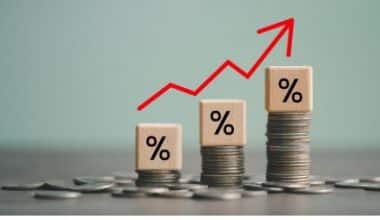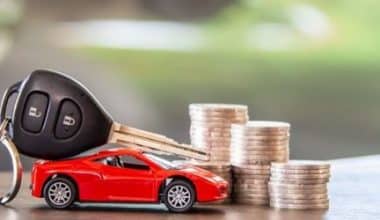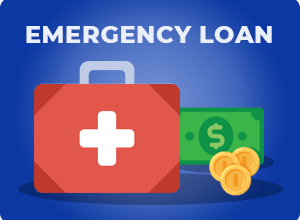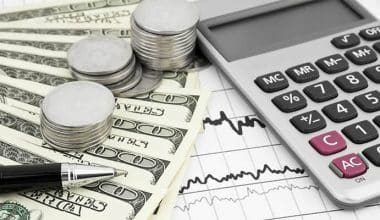One key distinction between secured and unsecured debts is whether or not the borrower is required to put up collateral in exchange for the loan. If you are in the market for a loan or currently making payments on a loan, familiarity with the differences between secured and unsecured debt is essential. Here’s a quick rundown of each, along with some details on their advantages and disadvantages.
Secured vs Unsecured Debt
Secured debts are loans in which the debtor places some asset as a guarantee or security for the advance. A secured obligation or debt instrument simply states that if the borrower defaults, the creditor may use the resource to reimburse the assets given to the borrower. Home loans and vehicle loans are examples of secured debt or secured obligation, in which the product being financed serves as collateral for the lender. If the borrower fails to make convenient payment installments on a vehicle advance, the credit guarantor eventually secures responsibility and ownership of the vehicle. When an individual or corporation obtains a home loan, the property being referred to is used to back the repayment terms. In essence, the lending foundation maintains value (monetary interest) in the property until the home loan is completely paid off.
Most clients find it easier to obtain secured debt or secured obligation financing. Because a secured loan carries less risk for the lender, financing charges are often lower than risky advances. Secured debt is collateral-backed, whereas unsecured debt is not. Collateral is an asset that the lender can seize if you default on the loan. Mortgages, car loans, and personal loans secured by assets are examples of secured debt. Credit cards, school loans, and personal loans not secured by assets are examples of unsecured debt.
Secured debt is often easier to get than unsecured debt because the lender has collateral to fall back on if you default. However, interest rates on secured loans are typically greater than those on unsecured debt.
It is critical to grasp the distinction between secured and unsecured debt in order to make informed borrowing decisions. Unsecured debt lacks insurance or collateral. The name implies no security. If the debtor defaults, the moneylender should file a claim.
Secured vs Unsecured Debt Examples
One type of secured debt is a secured credit card. They function similarly to credit cards in terms of making purchases, although opening one usually necessitates a deposit. Compare it to a security deposit you could give a landlord before moving into an apartment; both are examples of collateral. Secured debt is frequent in mortgages and car loans, to name just two examples. If you take out a loan to buy a house or a car, for example, you’ll usually be required to put up that asset as collateral for the loan. Lenders may feel more comfortable with secured debts. If you take out a loan, keep in mind that the lender has the right to seize your property if you default on your payments. There could be additional fees or penalties for late payments. The borrower’s credit may suffer if the lender submits derogatory information to the credit agencies.
Traditional credit card debt, personal loan debt, student loan debt, and medical bill debt are all examples of unsecured debt. It’s possible that some debtors will employ unsecured loans specifically for this purpose. Since unsecured debt lacks collateral, creditors may place more weight on borrowers’ credit ratings and histories when making loan choices. Because of this, it may be more challenging to qualify for an unsecured loan than a secured one. However, borrowers may find certain benefits in unsecured loan options. If you’re interested in looking into alternative unsecured loan choices, it’s a good idea to talk to a lender about the specifics of these loans.
Examples of unsecured debts outside of bank advances include medical bills, certain retail payment agreements like memberships to recreation centers, and unpaid credit card balances. When you apply for a credit card, the company is essentially extending your credit without any security requirements.
Secured vs Unsecured Debt Auto Loan
Secured debts are ones for which the borrower pledges a valuable item as loan collateral. A secured debt simply means that the lender has the right to take possession of the asset in order to recoup the money it provided to the borrower in the event of default. Mortgages and auto loans are two common forms of secured debt for customers, where the object being financed serves as the collateral for the financing. If a borrower defaults on a car loan, the loan provider may ultimately come into possession of the vehicle. The property in question is used as collateral when a person or business obtains a mortgage; in fact, the lending institution retains equity (financial interest) in the property up until the mortgage is fully repaid. If the borrower falls behind on payments, the lender has the right to sell the property and recover the debt.
A secured auto loan is a type of financing that enables a borrower to purchase a new or used car while also giving the lender a security interest in the car. If the borrower defaults on the terms of the secured auto loan, the lender may seize the vehicle as collateral. Until the car loan is fully repaid, the vehicle is held as collateral by the security interest, which is a lien. Until you settle the obligation, lenders or the party holding the lien on your secured auto loan may retain ownership of the vehicle. Unsecured auto loans allow you to purchase an automobile while not granting the lender a security stake in the car. This kind of financing allows borrowers to purchase a new or used car without putting up any security.
Are Auto Loans Secured or Unsecured?
Due to the lack of collateral, which prevents the lender from taking your automobile in the event of default, lenders may charge a higher annual percentage rate (APR) for unsecured car loans.
Traditional auto loans are secured by the vehicle, but unsecured auto loans may also be available. In addition to secured and unsecured auto loans, lenders may also offer other forms of car loans. Within the wide categories of secured and unsecured auto loans, some lenders may offer subprime auto loans secured by the financed vehicle or unsecured without collateral.
A conventional auto loan is secured by the financed vehicle, whereas an unsecured auto loan is either a signature loan or an unsecured personal loan used to purchase a car.
If you need financing to purchase a vehicle, the majority of auto loans require collateral.
As previously mentioned, the lienholder of your secured auto loan may retain your vehicle’s title until you pay off the loan and release the security interest.
Is a Payday Loan Secured or Unsecured Debt
A payday loan also referred to as a cash advance loan, is typically short-term, has few requirements, and no credit check. Typically, loan quantities are modest. Payday loans may appear to be an ideal way to borrow quick cash to pay your rent on time. This is to avoid incurring late fees or to pay emergency bills, such as an air conditioner repair in the midst of summer or a car insurance deductible after an accident. This is the only benefit of a payday loan. Even though it is an unsecured debt, a payday loan can feel like a secured debt because your next paycheck serves as collateral. Typically, you will be required to repay your payday loan within a few weeks, or by your next payday, which can be challenging.
This is where many debtors become trapped in a cycle of debt, as the convenience of payday loans comes with a price: exceptionally high fees and interest rates. In fact, the annual percentage rate (APR) on some payday loans is as high as 600 percent. Over 90% of Americans ultimately repent their initial payday loan. A payday loan is classified as unsecured debt, so it’s a quick way to get cash — you don’t even have to leave your house, and your credit score is irrelevant — and you don’t have to put up anything of value as collateral. Sounds optimal, doesn’t it? Nevertheless, it’s hazardous. The simplicity and convenience of payday loans are offset by high fees, interest rates, and an often unachievable repayment schedule for the majority of borrowers.
Secured vs Unsecured Debt Mortgage
Mortgages are “secured loans” because the residence serves as collateral; if you cannot repay the loan, the lender may foreclose on the property. In contrast, an unsecured loan is not secured by collateral and carries a greater risk for the lender as a result. A mortgage is a secured loan that consumers use to purchase or borrow against real estate. To qualify for a mortgage, you must meet certain requirements, such as sufficient income and credit history. You can obtain a mortgage with variable term lengths and variable or fixed APR. The most prevalent mortgage type in the United States is a 30-year fixed-rate mortgage. Your mortgage will appear as a lien on the property’s title once you’ve acquired it. This means that if you fail to make payments, your lender can seize your property. They can avoid losses by selling the property through foreclosure.
Upon full repayment of the mortgage, the homeowner will obtain complete ownership of the property without any encumbrances. Also, the financial institution will release its lien on the real estate. This implies that the borrower’s debt to the lender is fully settled, and the latter is prohibited from seizing the borrower’s property via foreclosure. The responsibility of paying property taxes remains with you.
Is It Better to Pay Off Secured or Unsecured Debt?
Secured debts are considered less risky for lenders compared to unsecured debts. In the event of default on a secured debt, the lender may seize the collateral. Consequently, these loans may provide superior interest rates and financing conditions.
What Builds Credit Faster Secured or Unsecured?
An unsecured credit line facilitates rapid credit building. Unsecured cards typically offer higher credit limits, resulting in an improved credit utilization ratio compared to secured cards. This refers to the ratio between the borrowed funds and the permissible borrowing limit.
Does Paying off a Secured Loan Hurt Your Credit?
Secured loans are often recorded in the borrower’s credit file by multiple lenders. This could negatively impact your credit score. Timely loan payments typically have a positive impact on one’s credit score in the long run.
What Are the Negatives of Secured Debt?
The collateral securing the loan is in jeopardy. Defaulting on a loan may result in repossession of the collateral by the lender. The borrowed amount is usually restricted to the acquisition of a particular asset, such as a house or a vehicle.
Why Did My Credit Score Drop 40 Points After Paying off Debt?
Paying off debt can impact your credit score by altering your credit utilization ratio. It reduces the mean credit account age. Your credit accounts are limited in variety.
Is a Car Loan Unsecured Debt
Personal loans are typically unsecured, although they may be secured by an asset. A default on a car loan may result in repossession of the vehicle, as it serves as collateral for the loan.
Bottom Line
Secured vs unsecured debt both entail an obligation to repay, but the former carries more severe consequences in the event of default. Secured credit may offer higher credit limits and lower costs. However, unsecured credit also has advantages. It is essential to understand the distinction between unsecured and secured debt before seeking a loan. Comparing their differences and weighing their pros and cons can guide individuals in making financial decisions, increasing their likelihood of achieving their financial objectives.
Related Posts
- BAD CREDIT CARD: Bad Credit Card Offers
- BEST UNSECURED BUSINESS LOAN: What Is It, Loan for Small Business
- UNSECURED LOAN: Meaning, Best Loans & Differences
- THE BEST CREDIT CARDS FOR FAIR CREDIT 2023 ( Detailed Guide)
- What is a Secured Credit Card? Detailed Guide






